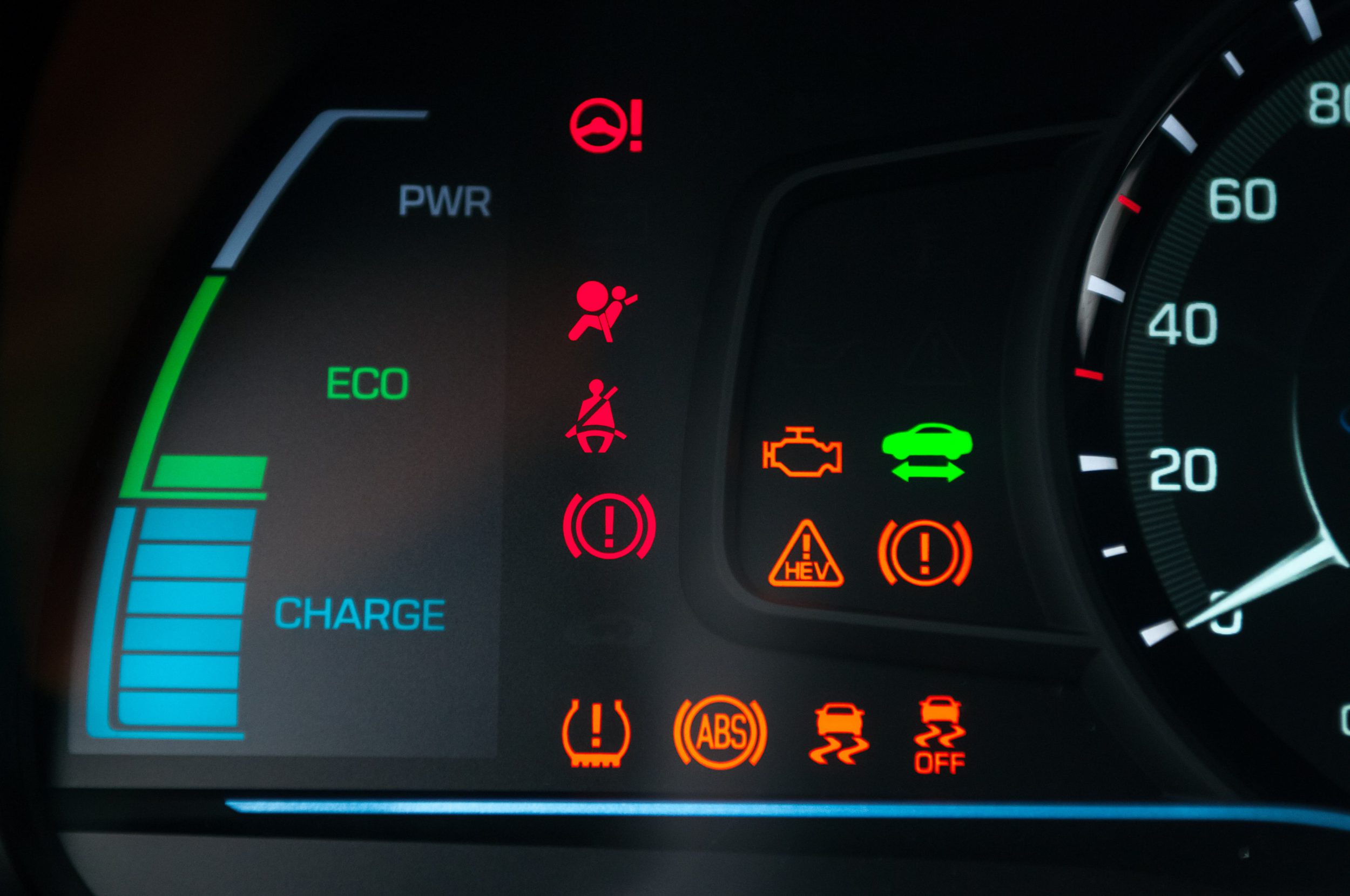Every car has a number of dashboard warning lights that, if remain lit once you’ve started your engine, could mean there’s an issue that needs investigating.
Many drivers can be understandably confused by what warning lights mean on cars. A recent study from HPI showed that it takes the average driver more than eight days to get an issue fixed, meaning many urgent warnings are often being left or ignored.
We’ve put together some tips on understanding your car dashboard warning lights and what to do if there’s a problem.
Common car warning lights
There are some car dash warning lights that most drivers will be familiar with, which means they typically know what to do should they flash up. These include:
- Fuel – most cars will display a warning if the fuel level goes below a certain point, advising approximately how many miles’ worth you have left in the tank
- Door/boot/bonnet open – if a door is not shut correctly, your car might show a warning symbol and display which one needs closing
- Seat belt– this shows if a passenger or the driver has failed to fasten their seat belt and the car is in motion
- Service – when a vehicle is ready for a service, there is often a symbol, sometimes detailing when it’s due.
These issues are fairly easy to resolve and the car warning light will disappear once the problem has been fixed.
There are, however, a number of other lights which can indicate a more serious issue and which often require a visit to the garage. These are usually displayed in either red or amber, depending on their severity.
Urgent car warning lights
A red warning light on a car can indicate a serious problem that needs immediate attention. A red light usually means it’s not safe to continue to drive the vehicle and, in this case, you should stop the car and get the issue checked.
Red warning symbols are most often seen when there’s an issue with the car’s:
- Brake system – this can mean the handbrake has been left on, the brake fluid needs filling up or there is a more serious issue with the system
- Engine coolant– the coolant level could need checking or this symbol could indicate the cooling system is not working correctly
- Oil pressure – this car dash warning light means you should check your oil level and visit a garage if the light remains on
- Power steering – any issue with your power steering needs to be looked at, as it could make driving more difficult and therefore dangerous
- Airbag – this warning light can mean your airbag is not functioning properly and could fail to deploy in a collision
- Ignition – any ignition warning should be looked at, as it may be an indication that your car will be unable to restart should you switch the engine off.
Amber car warning lights
Less severe problems are generally displayed by an amber or yellow warning light on a car’s dashboard. In this instance, you do not need to stop immediately but you should get your vehicle checked by a professional as soon as it’s safe to do so.
Some common amber or yellow warning lights in a car include:
- Emissions – a blocked filter or system fault can cause this symbol to light up
- Oil level – if this appears you should check your oil and refill if needed
- Tyre pressure – this could indicate a drop in tyre pressure. You should top up as needed according to your manufacturer’s guidance and replace when necessary
- Brake pads – the condition of your brake pads could be deteriorating if this warning symbol is displayed, so they should be checked out
- Light bulbs – a warning symbol could appear if any of your headlamps, brake lights or taillights are not functioning
- Suspension – this could affect vehicle handling and can be caused by one of a number of issues, including a problem with the compressor.
Know your car and the symbols
There are a number of other warning symbols that may show on your dashboard, depending on the make and model of your vehicle and whether it’s a petrol, diesel, automatic or manual car.
It’s a good idea to get to know your car’s warning symbols. Your manual should contain all the relevant information including manufacturer advice on what to do should a light be displayed.
How to reset car warning lights
Some warning lights can be reset easily by following the instructions in the manual, such as the tyre pressure settings. However, it’s usually best to allow professionals to deal with any potentially serious issues and reset the warnings to ensure your car is safe to drive.
A problem can sometimes be related to the car warning light system itself, so it’s always advisable to get a vehicle checked at an authorised garage and reset accordingly.
Keep your vehicle in check
To reduce the chances of having to deal with a warning light, keep your car maintained with an up-to-date MOT and service and check you’re fully insured. And if there are any issues, make sure you get them seen to sooner rather than later by an approved repairer or garage.
Of course, if a red warning light on your car appears whilst driving, alongside a malfunction, you should pull up once it’s safe to do so and call for breakdown assistance.
If your vehicle is in the garage due to a warning light issue and you need to borrow a car in the meantime, check out our fully comprehensive temporary car insurance policies. With cover available for one hour to 30 days, our short-term solution is flexible and it’s easy to get a quote.
Don’t forget to check out our news section for more useful tips and advice.



